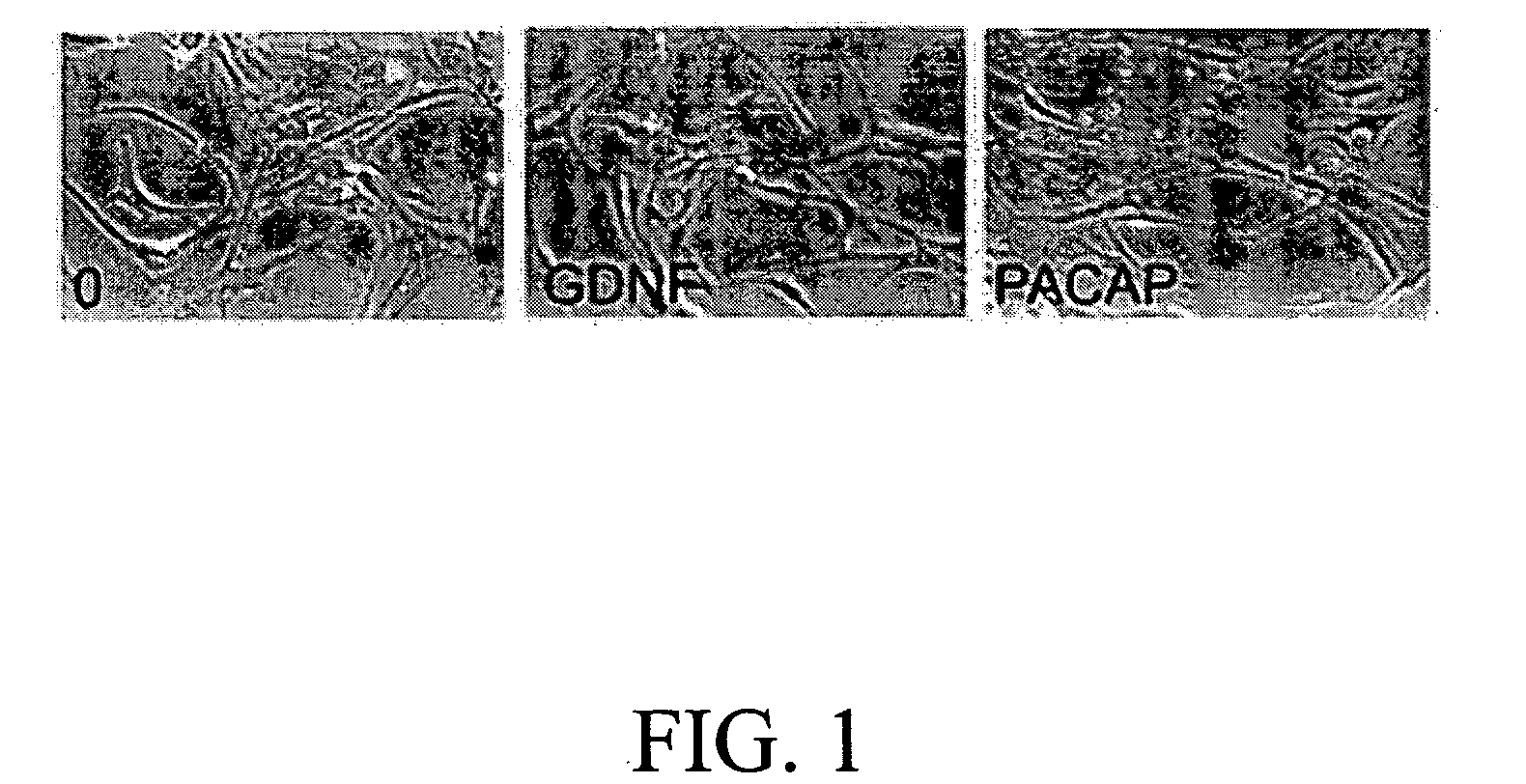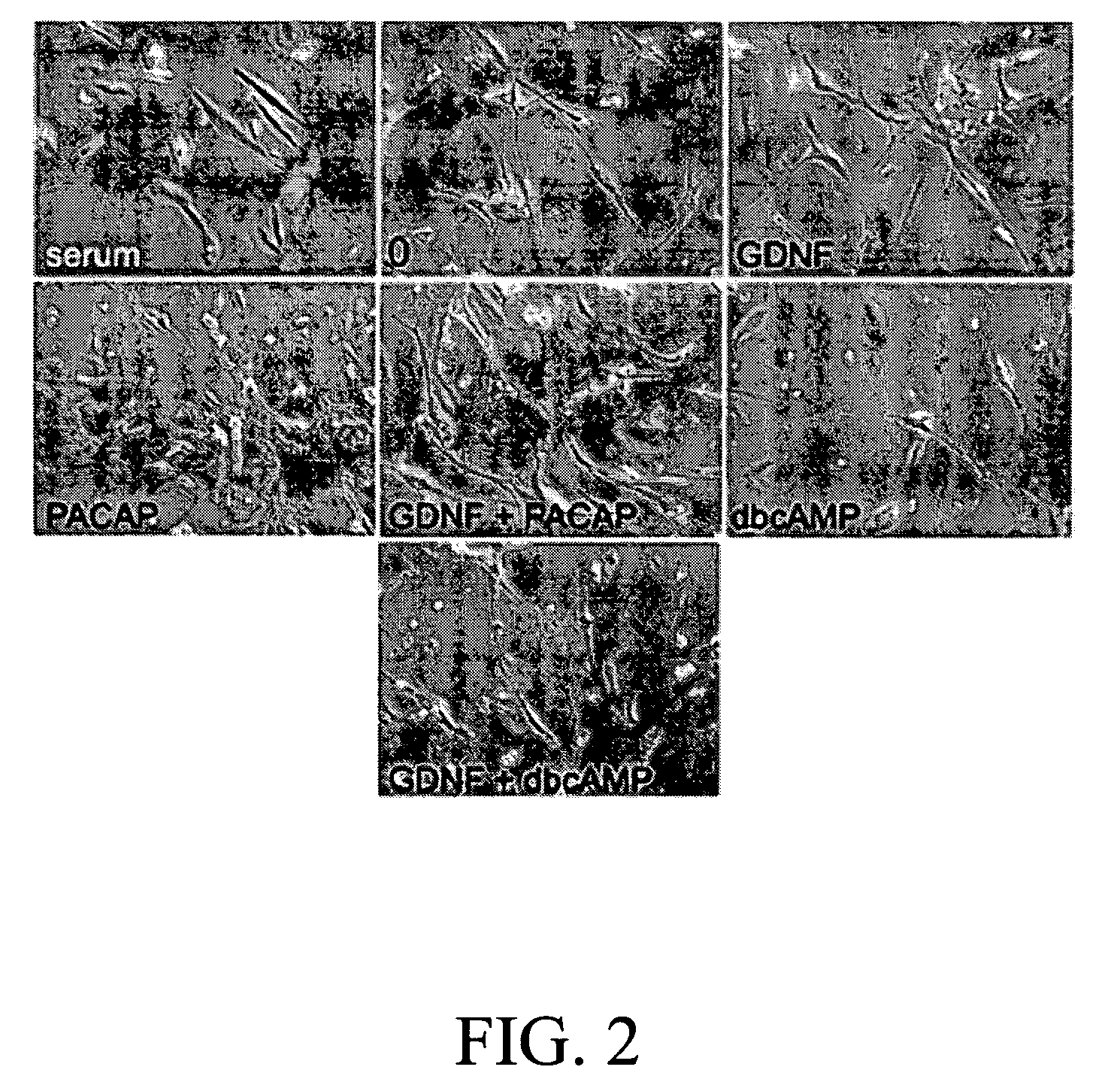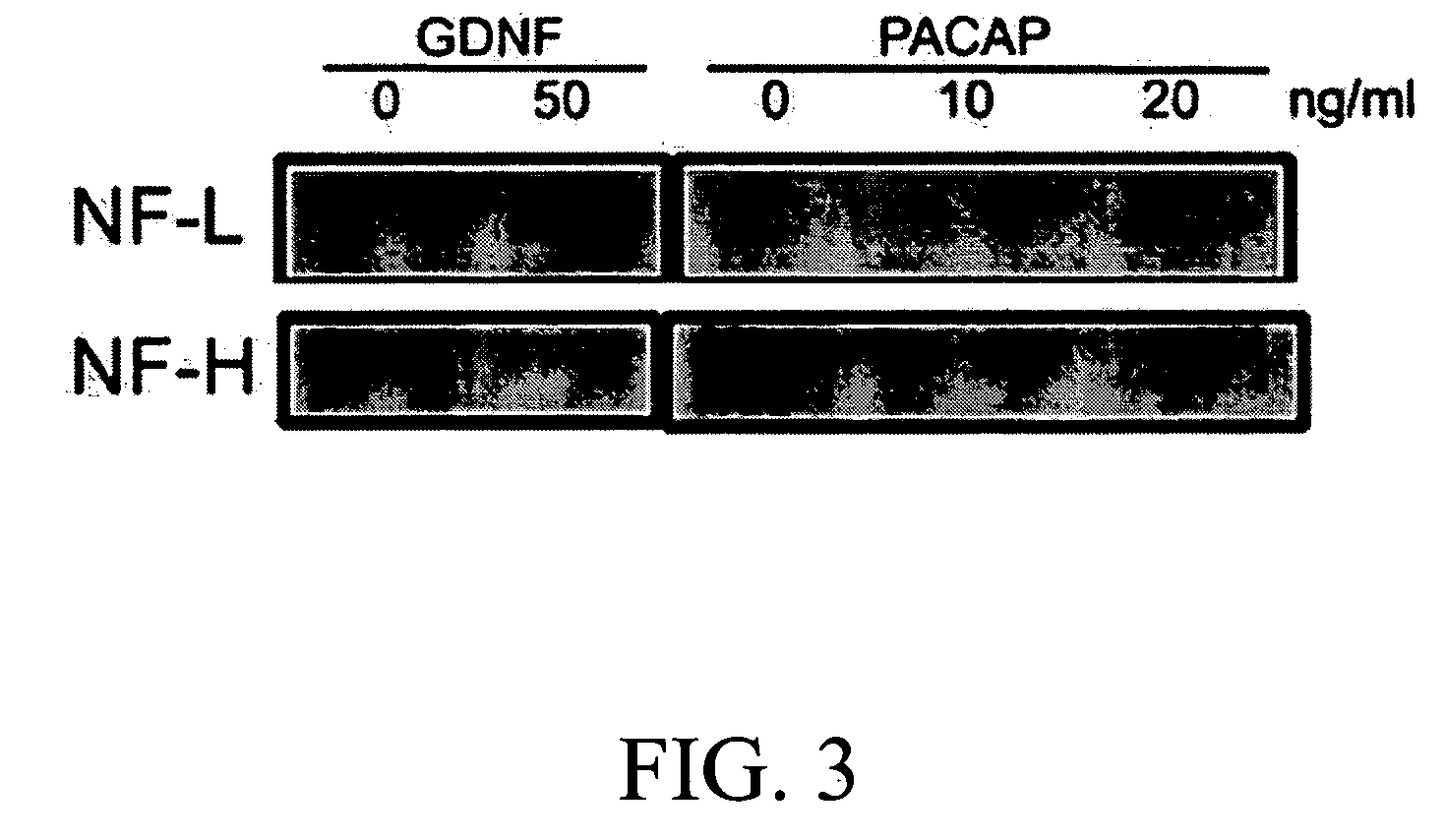Method for inducing neural differentiation
a neural differentiation and neural cell technology, applied in the field of neural differentiation induction, can solve the problems of inability to stimulate sscs to generate neural cells with antioxidant agents such as -mercaptoethanol and retinoic acid only in vitro, and achieve the effect of stimulating the change of neural cell morphology and being safe and effectiv
- Summary
- Abstract
- Description
- Claims
- Application Information
AI Technical Summary
Benefits of technology
Problems solved by technology
Method used
Image
Examples
example 1
Size-Sieved Stem Cell Derived from Human Bone Marrow
[0024] SSCs were isolated from human bone marrow as described previously (Hung et al. (2002)). In brief, human bone marrow was aspirated from the iliac crest of normal donors, and then washed twice with phosphate-buffered saline (PBS). The cells were loaded into 1.073 g / ml Percoll solution (Sigma®), and then centrifuged at 900 g for 30 min. The mononuclear cells (MNCs) were collected from the interface, and plated at the density of 1×106 MNCs / cm2 onto a 10-cm plastic culture dish comprised of an inserted sieve with 3-μm pores (Transwell System, Corning®). The cells were cultured in Dulbecco's modified Eagle's medium-low glucose (DMFM-LG) containing 10% fetal bovine serum (FBS), 100 U / ml penicillin, 100 mg / ml streptomycin, and 0.25 μg / ml amphotericin B (serum-containing medium). After 7 days, the cells adhering to the upper part of the inserted sieve had a larger, fibroblastic-like morphology, and were named SSCs. However, the cell...
example 2
Stimulation of Size-Sieved Stem Cell Derived from Human Bone Marrow
[0025] After 48 h in serum containing medium, SSCs were treated in serum medium (ITS medium) alone, and in ITS medium containing GDNF (20 and 50 ng / ml, R&D®), PACAP (10 and 20 ng / ml; Sigma®), or dbcAMP (20 μM; Sigma®). ITS medium consisted of 56% DMEM-LG (Life Biotech®), 40% MCDB-201 medium (Sigma®), and 1×ITS medium supplement (Sigma®) contained 1 mg / ml insulin, 0.55 mg / ml human transferrin, 0.5 μg / ml sodium selenite, 10 nM dexamethasone (Sigma®), and 10 μM ascorbic acid (Sigma®)). We found that SSCs in DMEM-LG medium without serum were founded to respond poorly to GDNF and PACAP. However, when SSCs were cultured in serum free medium with ITS supplement, these cells well adhered onto cultured plates and extended their processes. Therefore, treatments were performed in ITS medium.
[0026] The morphology of SSCs is as shown in FIGS. 1 and 2. As shown in FIG. 2, when SSCs were cultured in 10% FBS-containing medium, the...
example 3
Effects of GDNF and PACAP and dbcAMP on Neuron-Specific Markers
[0027] This is to study the effects of GDNF, PACAP and dbcAMP on neuronal differentiation of SSC in ITS medium. The levels of neuron-specific markers (NF-L and NF-H) in the SSCs were examined by Western Blotting. The cells were replated at the density of 1×105 cells per 35 mm petri dish and cultured for 7 days in ITS medium with GDNF, PACAP or dbcAMP at the distinct concentrations. Cells were harvested and gently homogenized on ice using PBS containing 1% SDS, 1 mM phenylmethyl-sulfonylfluoride (PMSF), 1 mM EDTA, 1.5 mM pepstatin, 2 mM leupeptin, and 0.7 mM aprotinin. Protein concentrations were determined using a Bio-Rad® DC kit. Ten μg of total protein was loaded onto 7.5% SDS-PAGE, and transferred to a nitrocellulous membrane. NF-L (70 kDa) and NF-H (200 kDa) were identified by incubating the membrane with anti-NF antibodies (Chemicon®) overnight at 4° C., followed by horseradish peroxidase-conjugated secondary antib...
PUM
| Property | Measurement | Unit |
|---|---|---|
| density | aaaaa | aaaaa |
| size | aaaaa | aaaaa |
| morphology | aaaaa | aaaaa |
Abstract
Description
Claims
Application Information
 Login to View More
Login to View More - R&D
- Intellectual Property
- Life Sciences
- Materials
- Tech Scout
- Unparalleled Data Quality
- Higher Quality Content
- 60% Fewer Hallucinations
Browse by: Latest US Patents, China's latest patents, Technical Efficacy Thesaurus, Application Domain, Technology Topic, Popular Technical Reports.
© 2025 PatSnap. All rights reserved.Legal|Privacy policy|Modern Slavery Act Transparency Statement|Sitemap|About US| Contact US: help@patsnap.com



